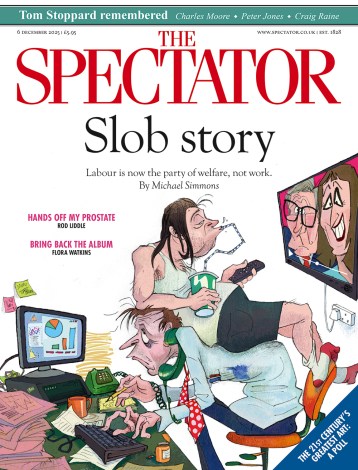In her memoir Time on Rock, Anna Fleming charts her progress from ‘terrified novice’ to ‘competent leader’ as she scales rocky vertical routes with names such as the ‘Inaccessible Pinnacle’ and the ‘Savage Slit’. There is poetry in the vocabulary of climbing, with its gritstone, gabbro and basalt and its slopers, arêtes, underclings, heel hooks and, my personal favourite, the thrutch — a kind of hip wiggle that can get a climber out of a tight squeeze. ‘There is nothing elegant in a thrutch,’ we are told.
One element of the book that distinguishes it from most climbing literature is its female perspective. Fleming initially compares herself unfavourably with her male counterparts: ‘I saw their height and armspan and told myself that climbing was easier for men, since they generally have a longer reach.’ She admired the ‘brawny masculine strength’ that could never be hers.
This changes when she observes two women climbers in Greece who seemed untroubled ‘by their female bodies: they blazed up routes’ and ‘moved fluently, using imaginative sequences to reach holds that lay beyond them. They had… exceptional technique’. ‘Watching them pull off move after move’, Fleming realises that ‘the female body is not a barrier to top-class climbing’. But the masculine bias of the sport rears up in unexpected places. In Moray, a chunk of rocky Scottish coast north of the Cairngorms, Fleming is faced with climbing Thatcher’s Crack, Special Brew, Horny Beast, Legover Wall or Primitive Thoughts About Modern Girls.
Her fascination with language infuses her descriptions of the textures of various stones and the mountains they form. In this regard, Time on Rock can take its place next to Nan Shepherd’s The Living Mountain. Written in the 1940s, but only published in 1977, that book explores the author’s intimate, passionate relationship with the Cairngorms. It is Shepherd who reminds Fleming to eschew the competitive, goal-oriented need to bag a mountain. ‘Returning to her words again and again,’ Fleming writes:
I saw how one could go more openly into the hills, taking a wider perspective for a deeper experience. Influenced by eastern philosophy and Zen Buddhism, Shepherd sought to dissolve the ego and reach a state of oneness with the world.
A oneness Fleming reaches for in Time on Rock.
Perhaps because her eye is unwaveringly trained on climbing — the tenuous footholds, the razor-sharp slits into which she winches her fingers, the mental acuity needed to avoid injury or death — Fleming doesn’t tackle environmental issues head on. During a climb in the Cairngorms in July 2018, she notes that there had been no rain for months:
Wildfires raged over tinder-dry peat bogs, fields, gorse thickets and forests. Across the Cairngorms, farmers and crofters were struggling. With so little water around, grass and crops grew slowly; some perished. To keep livestock going they turned to deep water sources, drawing on seldom used wells and reservoirs, hoping they wouldn’t run dry.
Then she adds: ‘While day after day of cloud-free skies created difficult conditions for many, some rejoiced.’
The conditions she refers to are failed crops, soil erosion, dehydrated livestock and extreme drought. She carries on: ‘Routes that normally seeped and oozed water had completely dried out. We expected rain to come and spoil our fun, but it never did.’ This slightly odd tonal shift (having fun in a deadly drought) raises a big question: how can we write joyfully about the landscape during this era of environmental devastation? With her focus firmly on rock, Fleming is able to tune out the disappearing snow on the Cairngorms and other worrying climatic shifts. She concentrates on the now, and invites us to think for ourselves about what may or may not be there for much longer.
Paradoxically for a book about ascending to great heights, Time on Rock comes most alive when Fleming digs deep into geology and history. At Dinorwig, a mountain of slate in Snowdonia, she reminds us of the ubiquity of this rock: ‘All the rented terraces, flats, cottages and tenements of my twenties, almost every house I have lived in across the UK, has been roofed by slate.’ The men who mined it risked their lives by clambering deep inside mountains, and their hard labour has shaped this part of Wales. Fleming beautifully merges history with her own present:
Clinging to the rungs, my mind is with the quarrymen. Where my hands are now — fingers wrapped tight around the sturdy, cold iron — theirs must also have been countless times before. I think of the calloused textures of those hands — transformed by so much exposure to rock, tools, ropes, chains and weather.
Fleming’s book is full of awe and wonder:
The self is poured into the stone, the rock flows through the body. In this state of being, boundaries loosen… A surface becomes an opening. Rocks gain depth, history and character.
The reader is encouraged to marvel at how the Earth can move us, and how we can move through its fragile and sometimes dangerous spaces as sentient beings:
From the rock face, where a climbing body plunges in and out of ancient matter, things feel different. Reaching into the core — in these moments of searing intimacy — the world reveals itself. Nothing is static. This place is an immense unfolding of dazzling vitality.
As vital as the book she has given us.






Comments